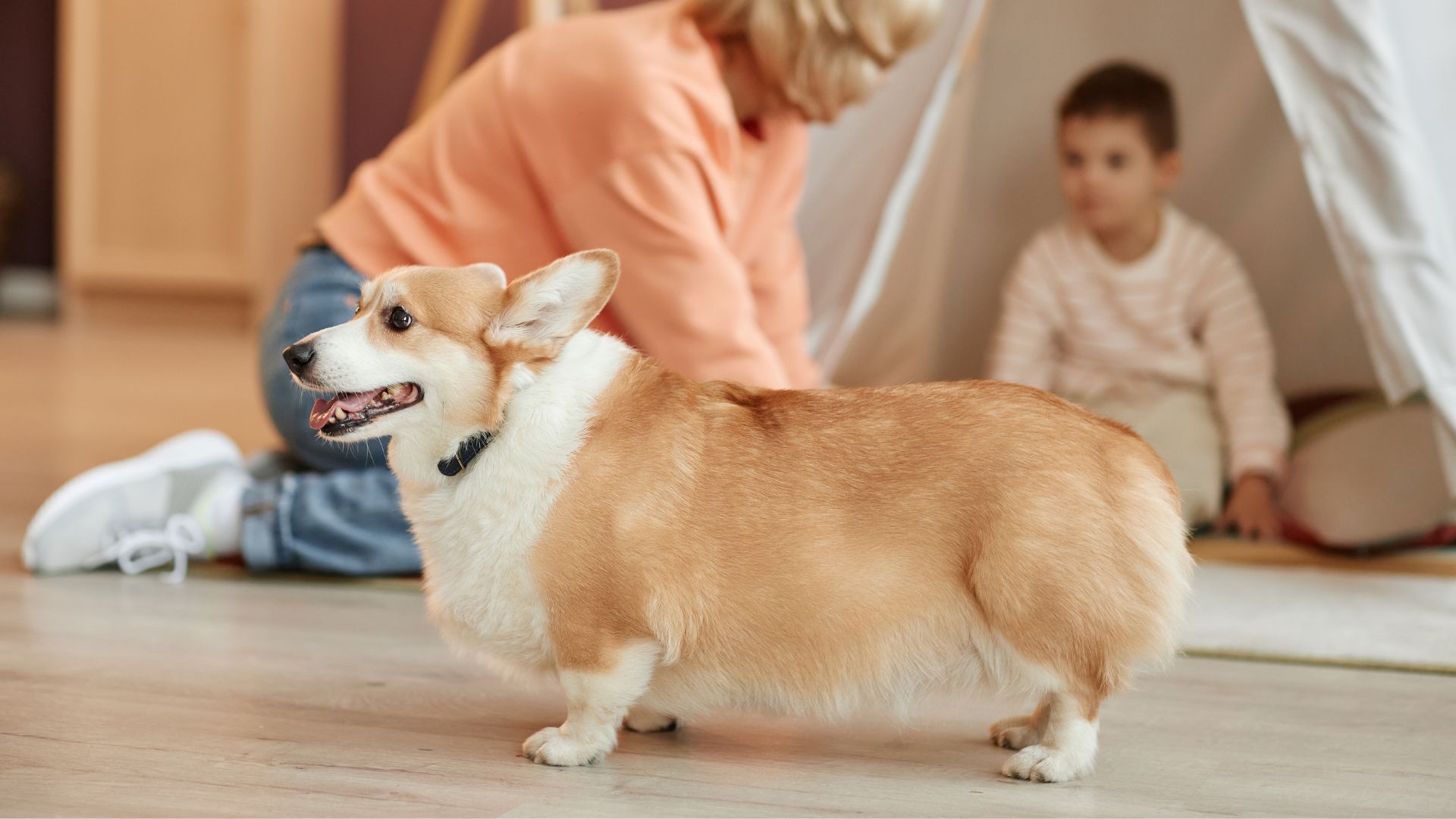Finding the perfect dog for a peaceful household can be a game-changer. Calm dog breeds typically have a gentle, adaptable temperament, making them ideal for laid-back parents.
These pups love to relax and aren’t known to bark excessively, only raising their voice when there’s a real cause for concern.
However, every dog has its own personality, so it’s crucial to remember that socialization and positive reinforcement training play a huge role in fostering a calm nature.
While many breeds are naturally composed, it’s essential to be fair to your pup and set realistic expectations based on their instincts and energy levels.
If you’re seeking a calm canine companion, you’ll find plenty of gentle breeds to consider. In this guide, we highlight 10 of the calmest dog breeds that make great family pets and offer a perfect balance of serenity and affection.
Best Easygoing Dog Breeds For Peaceful Parents
Find your perfect calm dog breed with the best easygoing dog breeds for peaceful parents.
1. Labrador Retriever
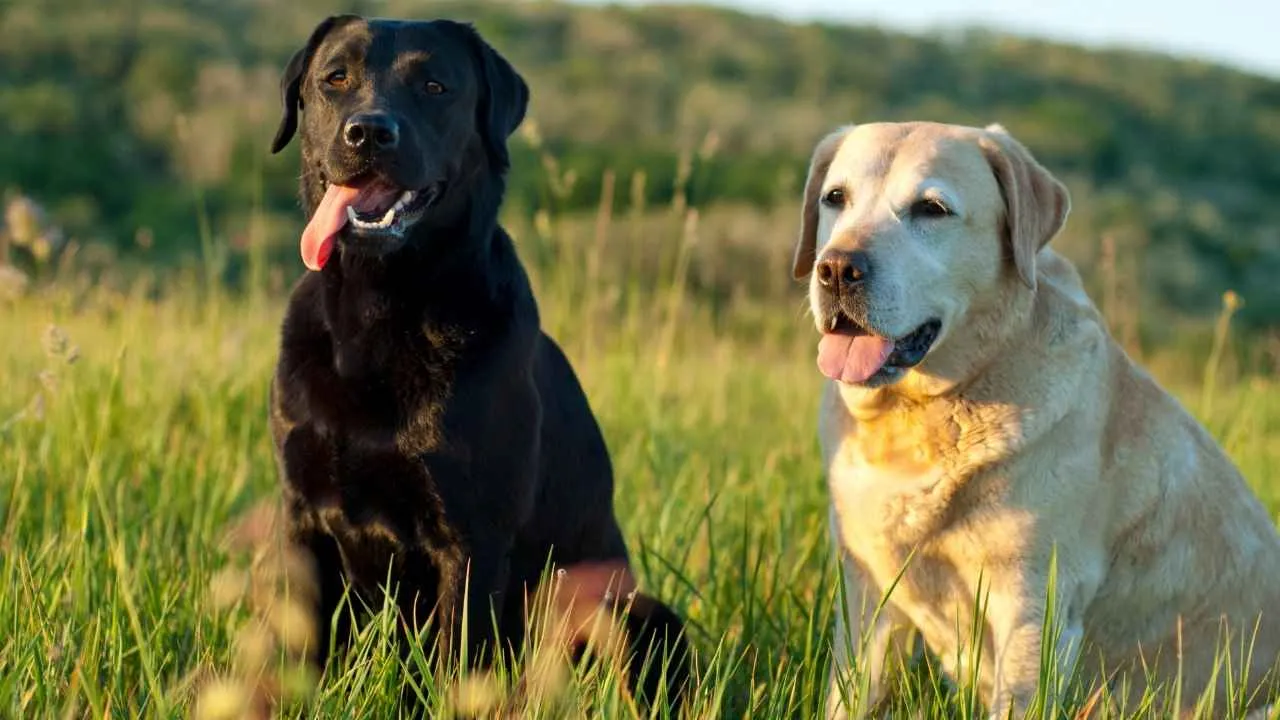
A Fisherman’s Helper
Labrador Retrievers have a rich history that dates back to the 18th century, when they were bred in Newfoundland to assist fishermen. Their primary job was to retrieve fishing nets, catch fish that slipped off hooks, and help haul in the day’s catch, as per Purina.
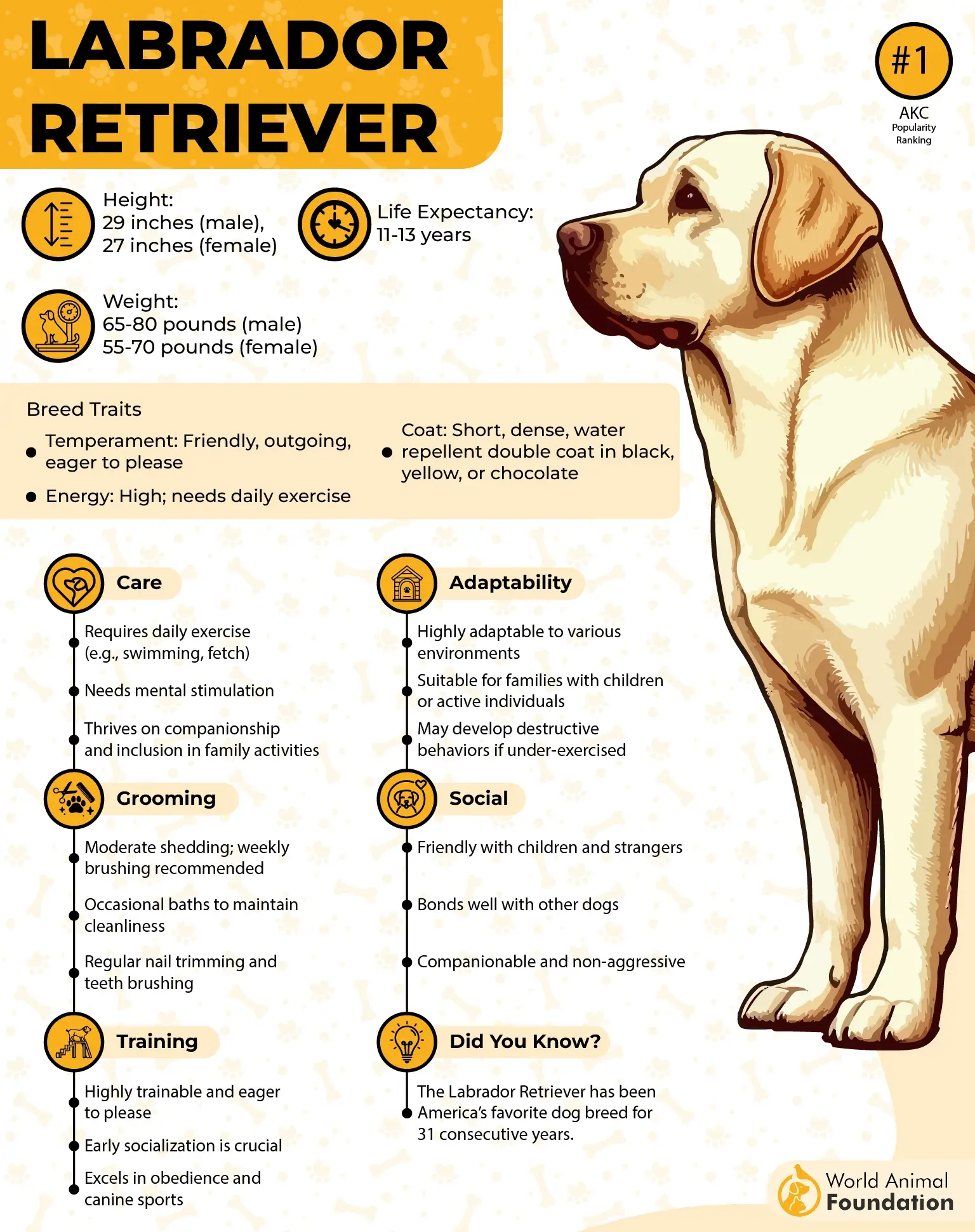
Friendly and Social
Labradors are renowned for their easygoing and affectionate nature. They’re naturally social and get along with nearly everyone—kids, strangers, and other pets included. Their friendly disposition makes them excellent family dogs, though they can be a bit pushy when it comes to demanding attention.
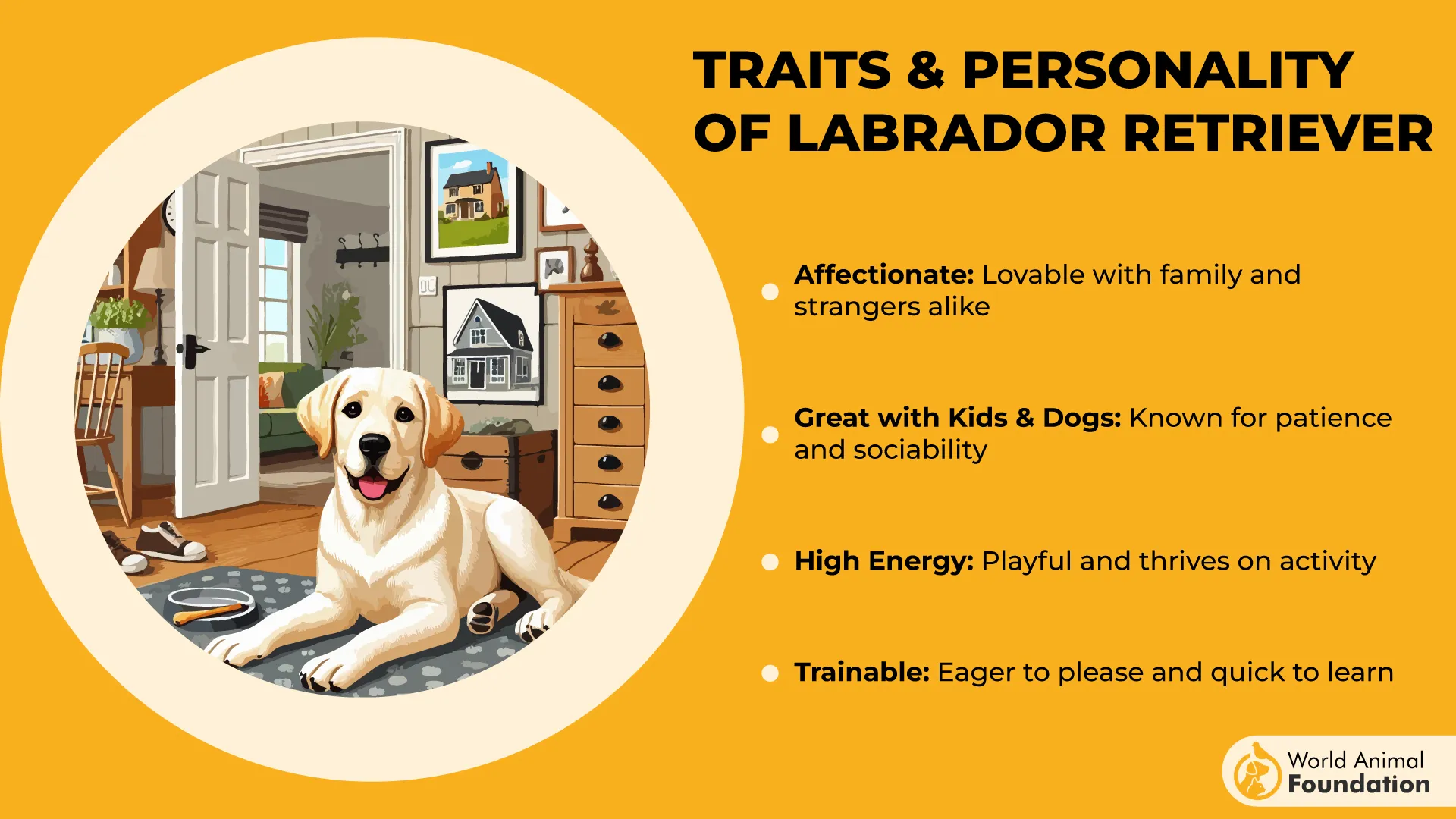
Active and Low-Maintenance
Labradors have a dense, water-repellent coat that sheds throughout the year, especially during seasonal changes, making regular brushing necessary to keep shedding under control. Without enough physical and mental stimulation, Labs can become bored and develop unwanted behaviors.
Fun Fact: Labs were originally bred to retrieve fishing nets—and their love for water is still going strong!
2. Golden Retriever
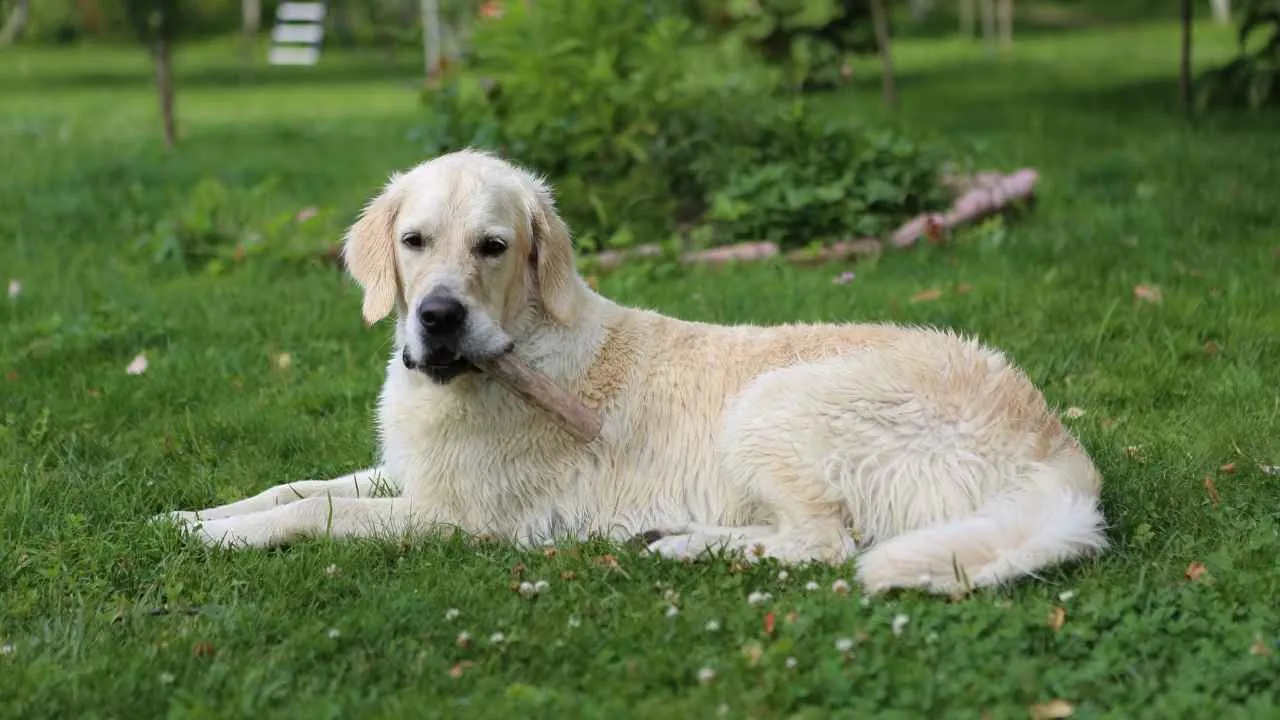
From Scottish Hunters to Family Pets
The Golden Retriever was originally bred in 19th-century Scotland as a gundog to retrieve waterfowl for hunters. Known for their excellent swimming and retrieving skills, they quickly became one of the most popular breeds.
First shown in England in 1908, they were officially recognized by the American Kennel Club in 1925 and have since gained fame as loving, loyal family dogs.
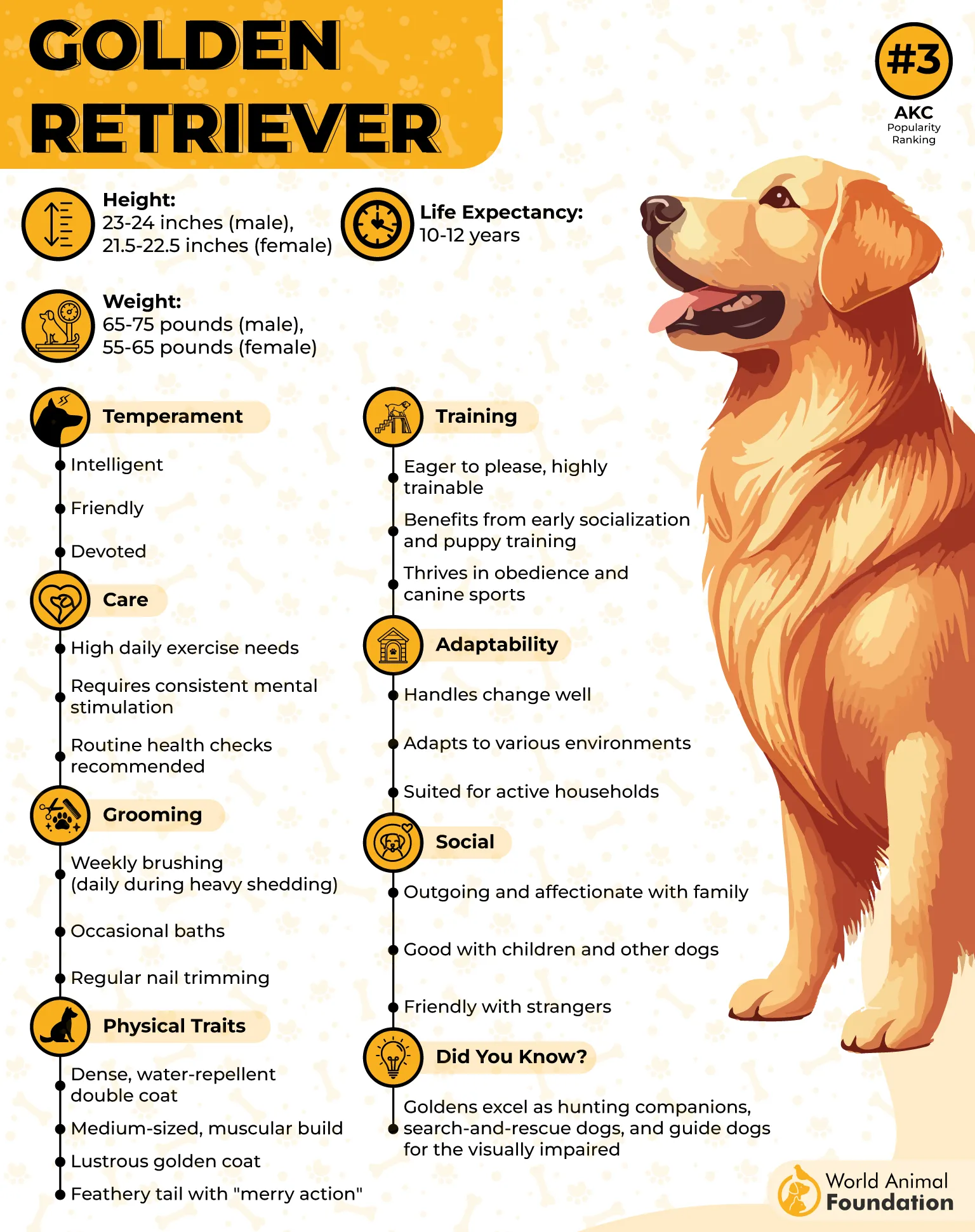
Gentle and Social
Golden Retrievers are renowned for their friendly, affectionate nature. They’re incredibly devoted and eager to please, making them perfect companions for families.
Their easygoing temperament allows them to get along well with kids and strangers. Golden Retrievers are truly one of the most affectionate dog breeds.
Smart but Easily Distracted
Golden Retrievers are intelligent and eager to please, but their curiosity and playfulness can make them easily distracted during early training.
With consistency and patience, they excel in obedience, agility, and field trials. They may need some extra guidance on leash walking to keep them from straying or pulling.
Fun Fact: Golden Retrievers were bred to retrieve waterfowl—and they still love swimming today!
3. Havanese
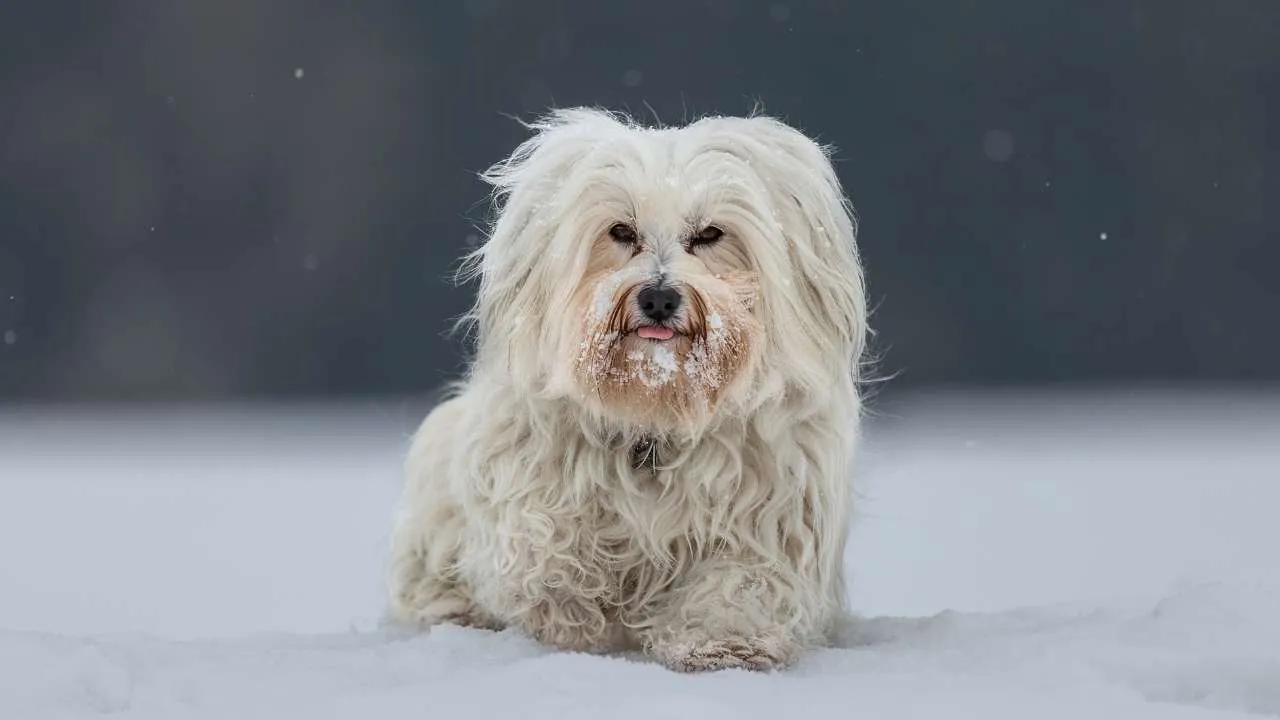
Cuba’s Charming Companion
The Havanese traces its roots back to the Bichon family of dogs, arriving in Cuba with Spanish settlers in the 1600s, according to the AKC. Originally favored by wealthy sugar plantation families, they served as lap dogs, companions, and even poultry herders.
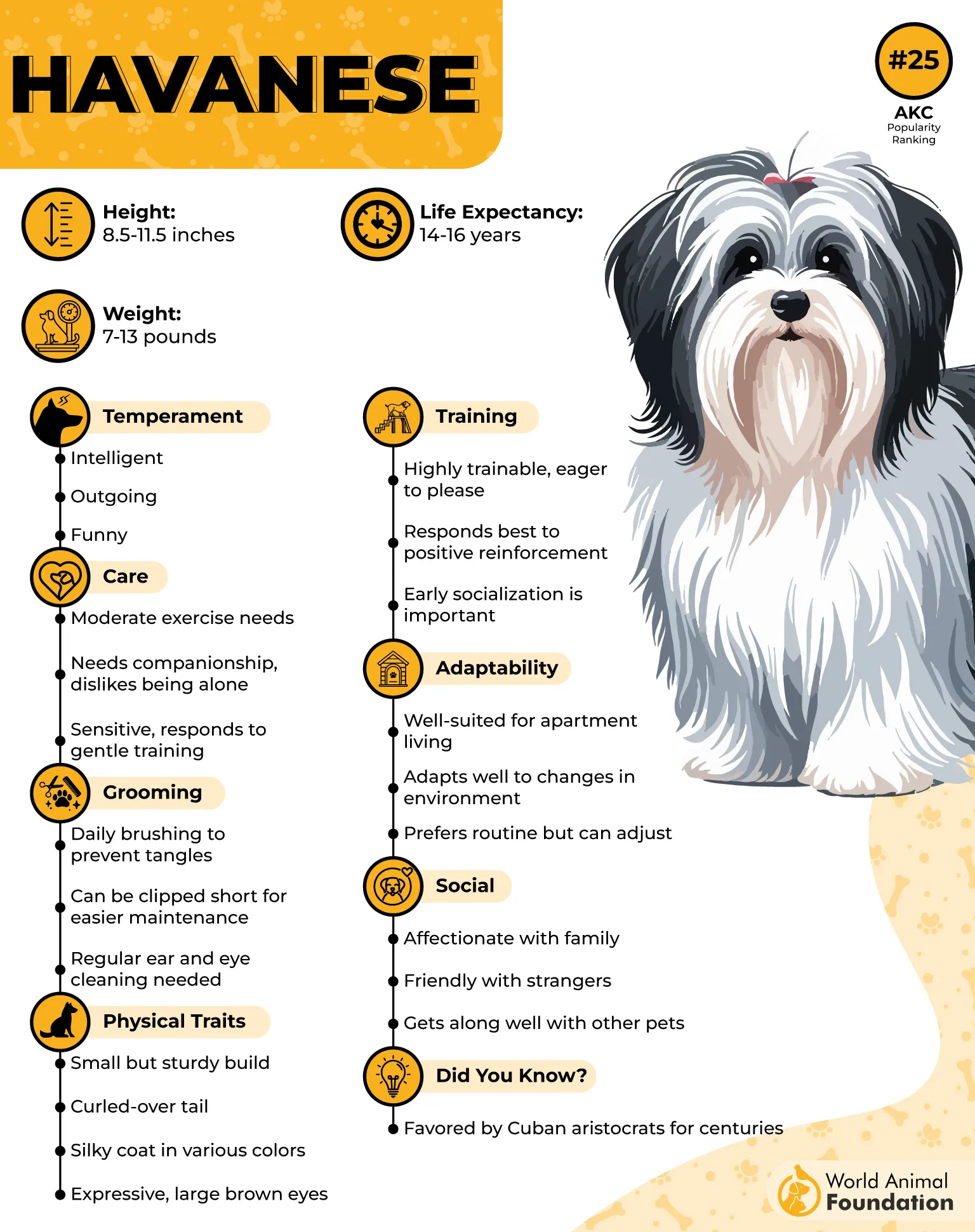
Cheerful and People-Loving
Unlike many toy breeds, the Havanese is friendly, sociable, and eager to make friends—both human and animal. These cheerful pups thrive on companionship and love being part of the family.
They’re great with children, enjoy learning tricks, and make excellent little watchdogs, though they’re far too gentle to guard.
Fluffy but Low-Key
The Havanese has a long, silky coat that needs brushing several times a week to prevent mats, but doesn’t require trimming. Their exercise needs are moderate—short walks, play sessions, or indoor games are enough to keep them happy and healthy.
Fun Fact: Charles Dickens and Ernest Hemingway both owned Havanese dogs!
4. Basset Hound
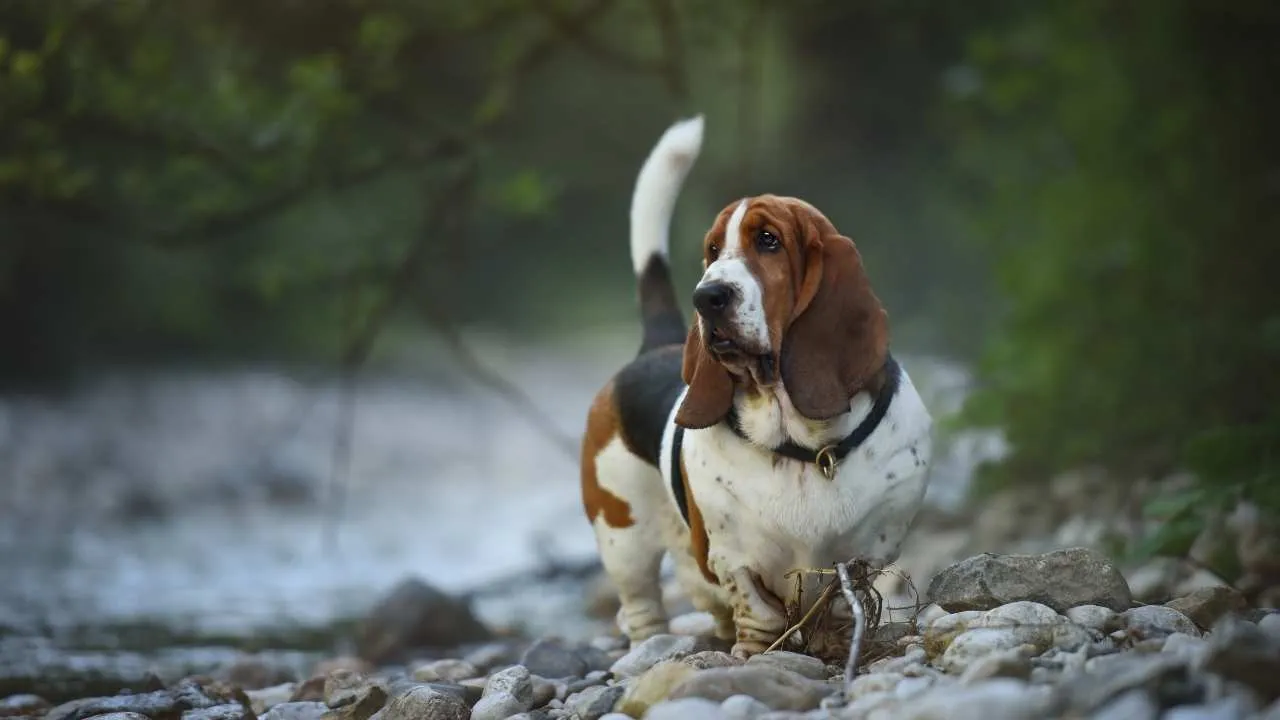
A Noble French Hunter
The Basset Hound dates back centuries to France, where it was bred as a slow, steady hunting dog for aristocrats. Known for tracking hares, rabbits, and deer, this scent hound has a remarkable nose second only to the Bloodhound.
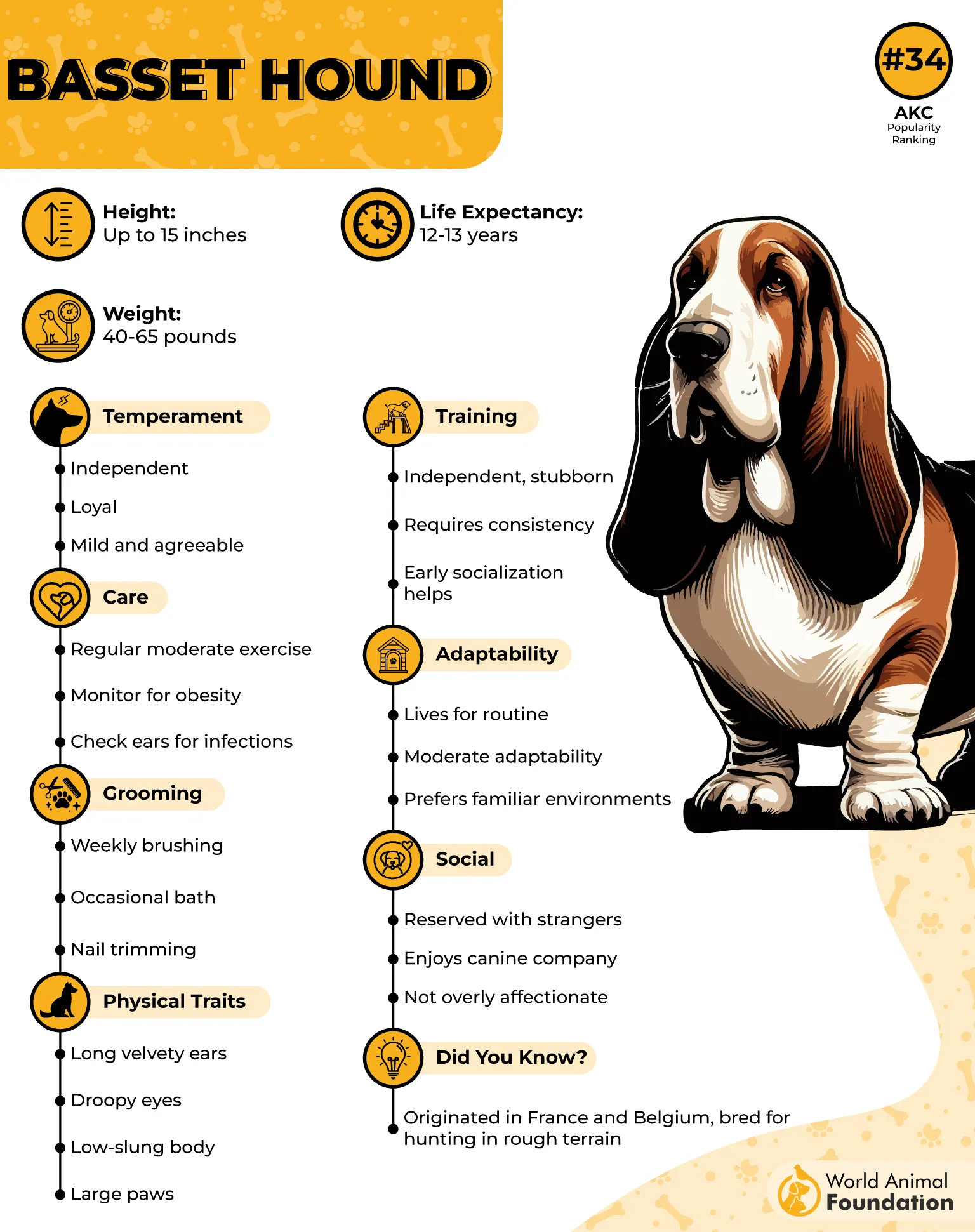
Laid-Back and Friendly
Basset Hounds are famously calm and easygoing, preferring to lounge around unless the scent of a trail calls them to action.
They’re friendly dogs who get along well with children, strangers, and other pets. While not the best watchdogs or protectors, their gentle nature makes them wonderful family companions.
Stubborn but Lovable
Bassets can be a bit stubborn and slow to respond, making training a test of patience and creativity. Their strong hunting instincts mean they may ignore commands if they catch an interesting scent.
Consistent, firm, yet gentle training works best to manage their independent streak and prevent unwanted behaviors like excessive barking or digging, as per PetMD.
Fun Fact: Despite their short legs, Basset Hounds are surprisingly faster than most people and need to be kept on a leash during outdoor adventures!
5. Leonberger
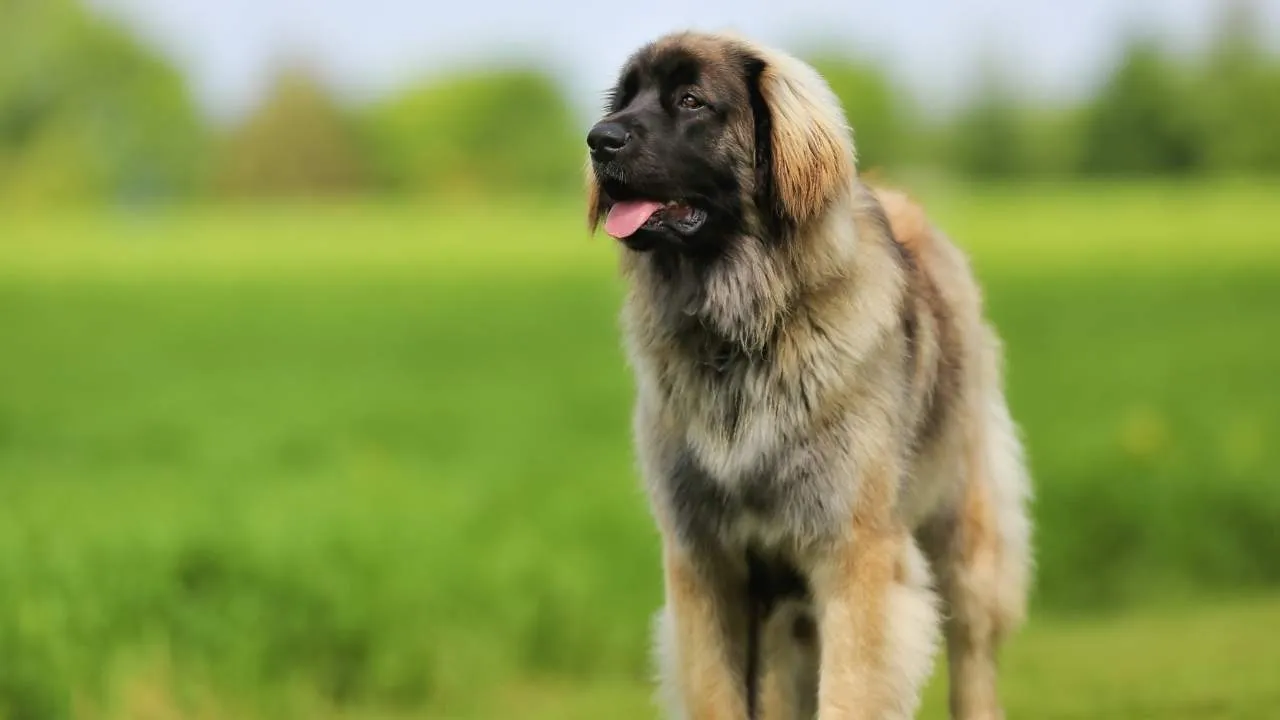
Gentle Giants with Heart
Leonbergers are friendly, affectionate, and incredibly loyal, making them excellent family pets, especially with children.
Despite their large size and imposing bark, they’re usually calm and welcoming to visitors. They bond deeply with their families and thrive on social interaction, but may show caution around unfamiliar dogs, so early socialization is key.
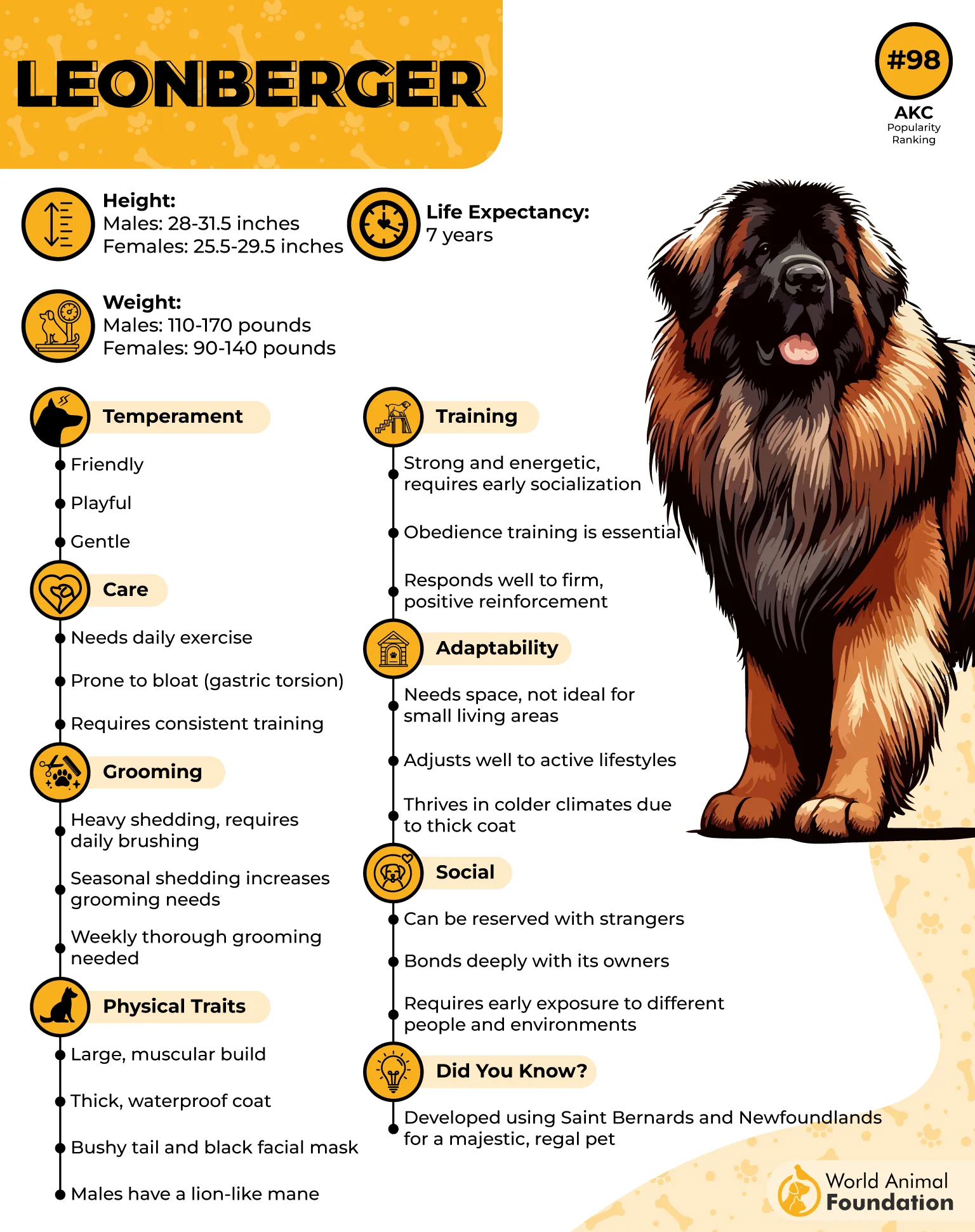
Thick Coats and Active Lives
With their dense double coat, Leonbergers need weekly brushing using combs and undercoat rakes to prevent mats and control shedding. They require at least an hour of daily exercise, including activities like hiking, swimming, or cart-pulling, to keep their muscles strong.
Independent but Trainable
Leonbergers are intelligent yet bred for independence, so consistent, positive, and repetitive training is essential. They respond well when handled by experienced owners or trainers. Gentle socialization from a young age helps prevent shyness or aggression toward strangers or unfamiliar dogs.
Fun Fact: PDSA says that Leonbergers were once famous cart-pullers in Bavarian villages—and some still enjoy pulling sleds or carts today!
6. Great Dane
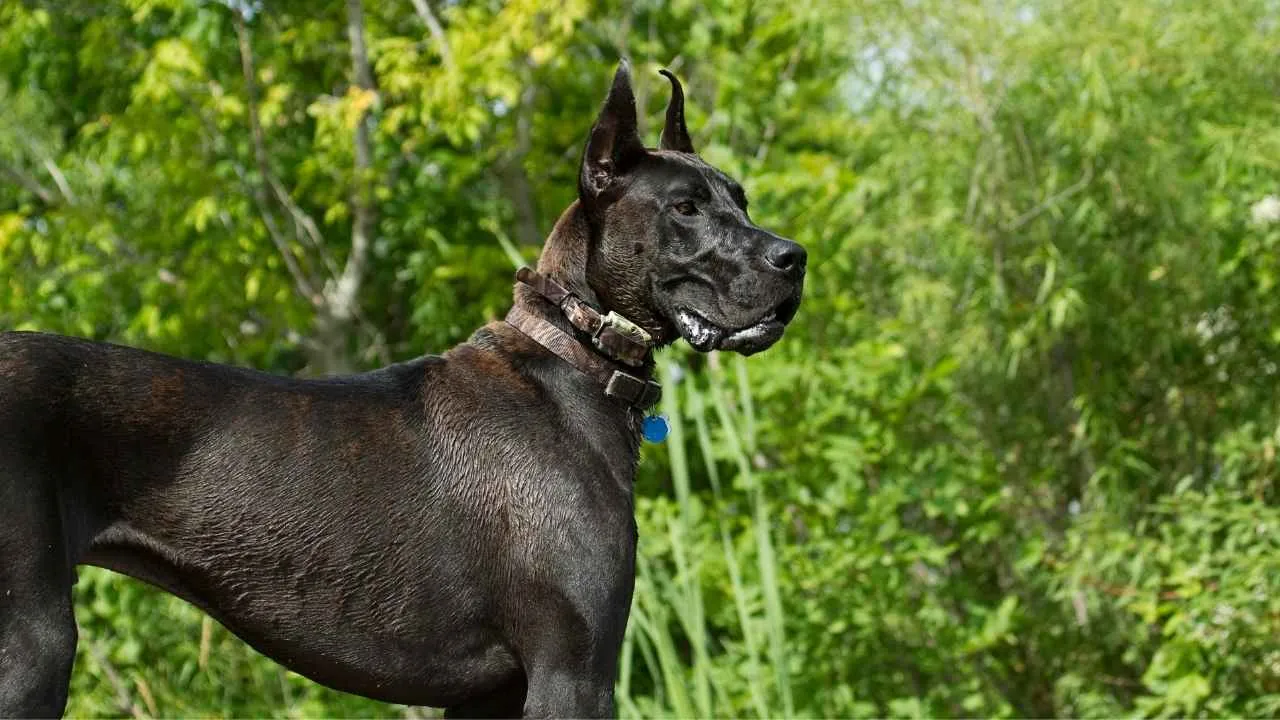
Germany’s Majestic Boar Hunter
Great Danes have a rich history dating back over 400 years in Germany, where they were originally bred for hunting wild boar, according to Britannica. Known for their massive size and elegant build, these dogs were prestigious guardians of estates and carriages.
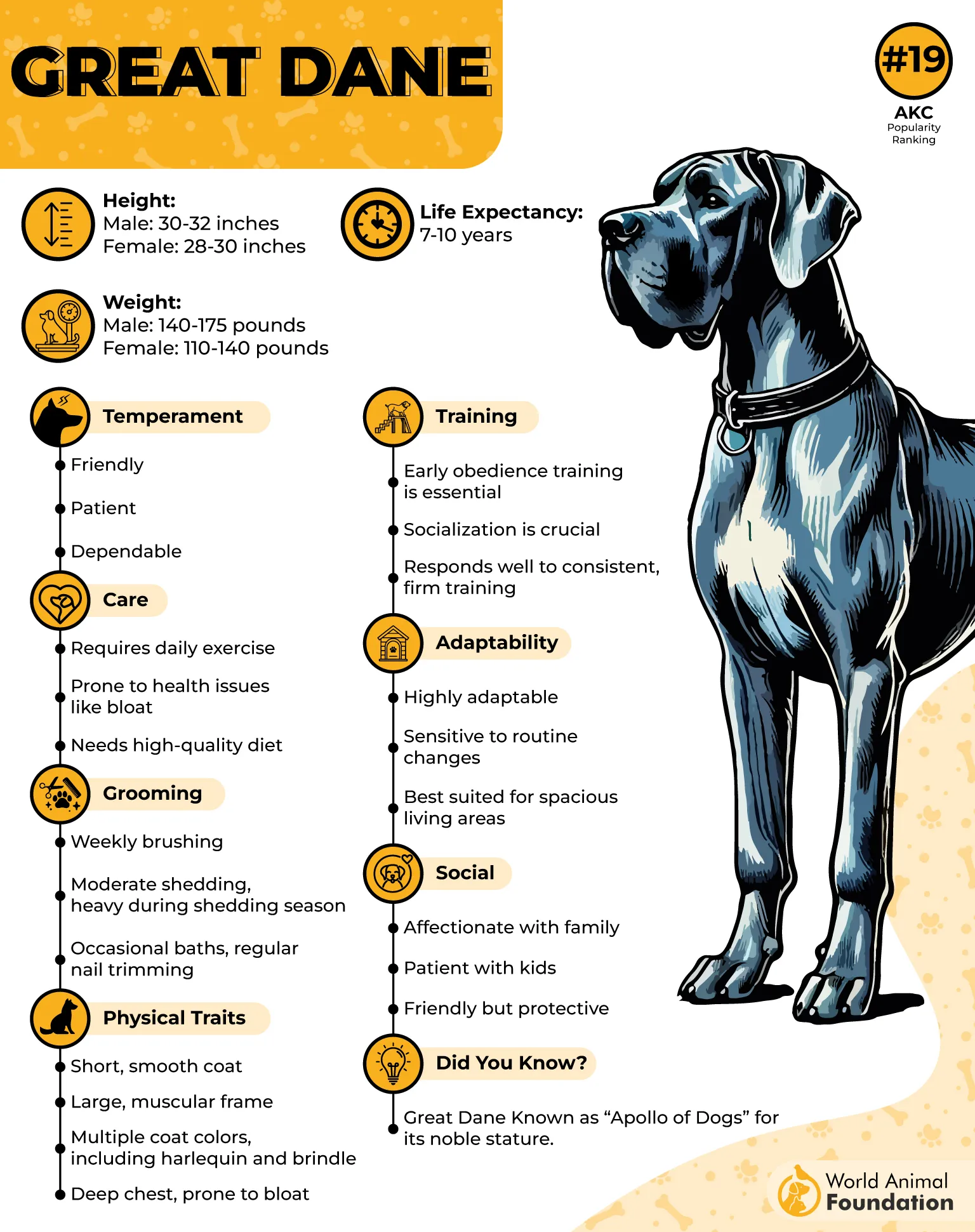
Gentle Giants with Big Hearts
Despite their intimidating size, Great Danes are affectionate, friendly, and dependable companions. They bond closely with their families, especially their own children, but can be wary of strangers and neighborhood kids. They are excellent watchdogs and can be territorial, but rarely bark without reason.
Low-Maintenance Coat, Big Needs
Great Danes have short, sleek coats that require minimal grooming—just weekly brushing, or daily during shedding season. Their large size means they need plenty of space to stretch and soft bedding to prevent calluses.
Fun Fact: Despite their towering height, Great Danes think they’re lapdogs—often trying to squeeze into the smallest spaces next to their owners!
7. Newfoundland
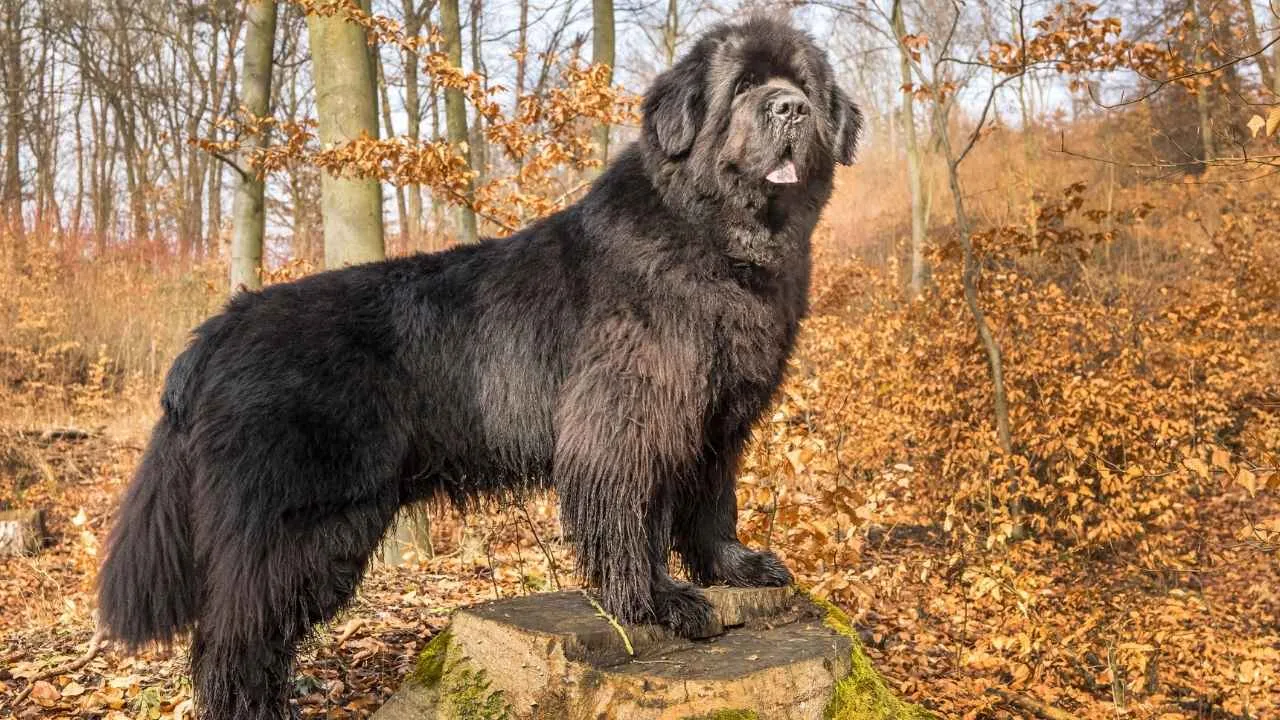
Canada’s Legendary Water Rescuer
Newfoundlands, or “Newfies,” originated as hardworking companions to Canadian fishermen. Known for their strength and swimming ability, these loyal dogs specialized in dramatic water rescues, using their webbed feet to save lives in icy waters.
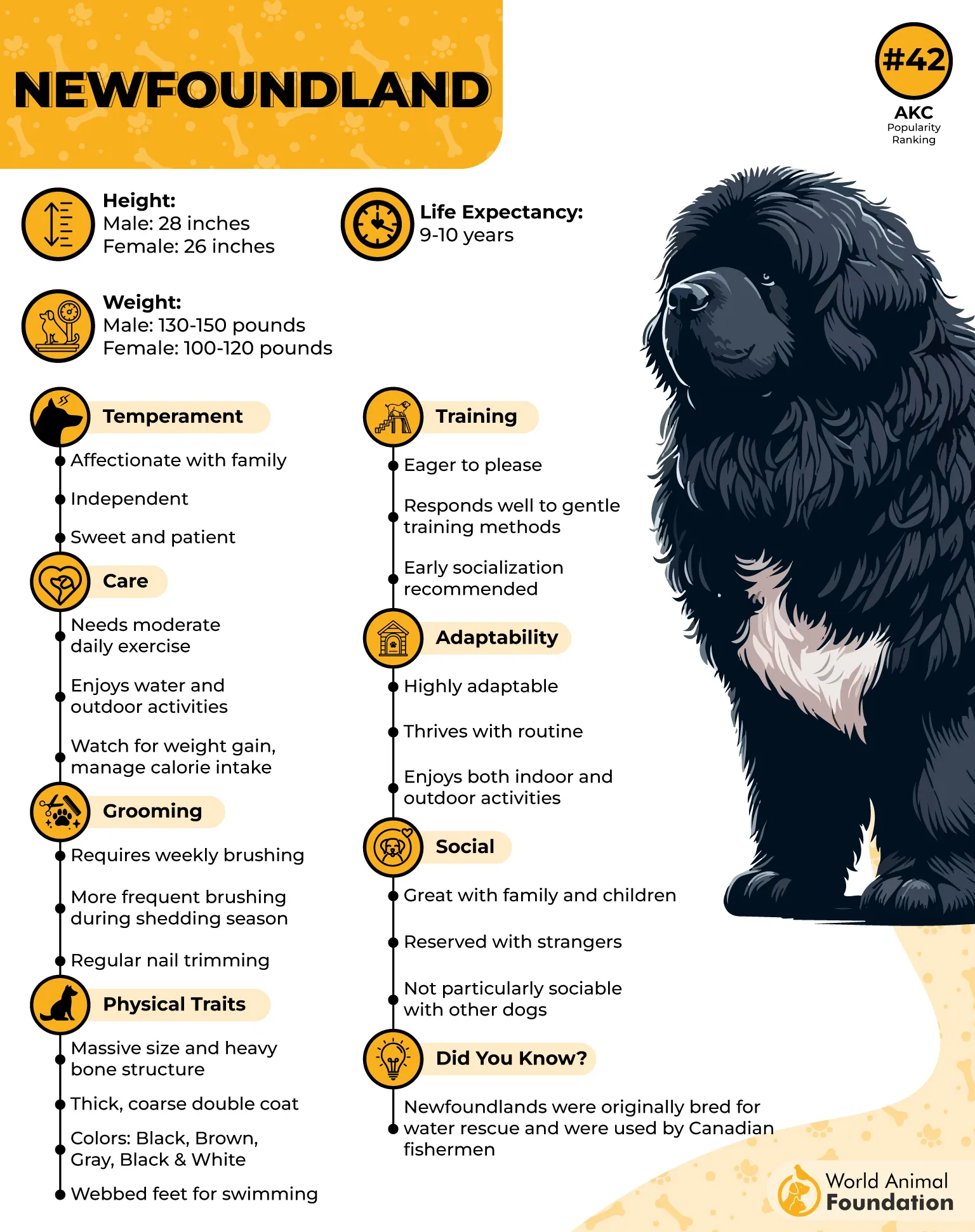
Gentle Giants with a Protective Heart
Despite their massive size, Newfies are gentle, loyal, and great with children, often serving as devoted family guardians.
They’re calm indoors but watchful and protective, willing to physically place themselves between their family and any threat. Though not prone to barking, their alert nature makes them excellent watchdogs.
Managing Size with Patience and Consistency
Newfies are intelligent and eager to please, but their large size means that training early and consistently is essential to ensure good behavior and control. They can become couch potatoes if not exercised enough, so gentle motivation helps keep them active and engaged.
Fun Fact: J.M. Barrie’s famous “Nana” in Peter Pan was inspired by his own Newfoundland!
8. Cavalier King Charles Spaniel
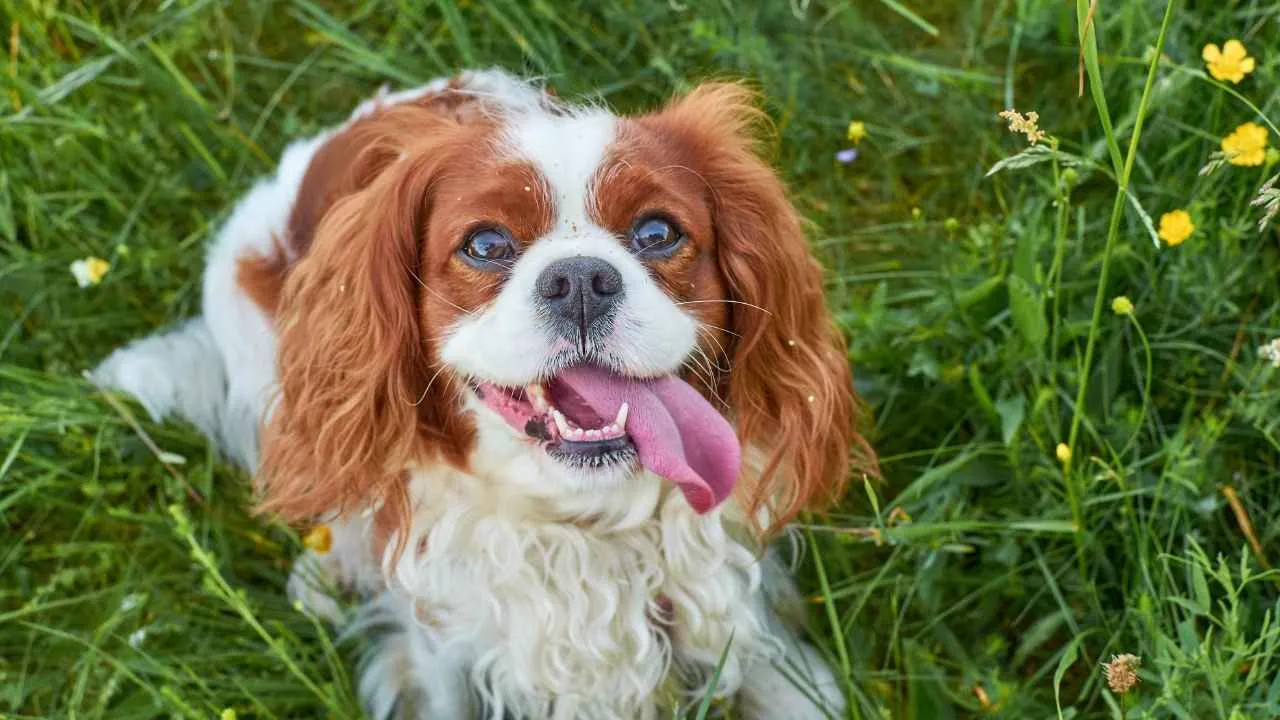
From Royalty to Family Favorite
They originated in England, descending from the English Toy Spaniel, which dates back to the 1600s. In the early 1900s, breeders sought to bring back the breed’s older, longer-muzzled look, which led to the creation of the Cavalier King Charles Spaniel in 1945, as per Hill’s Pet.
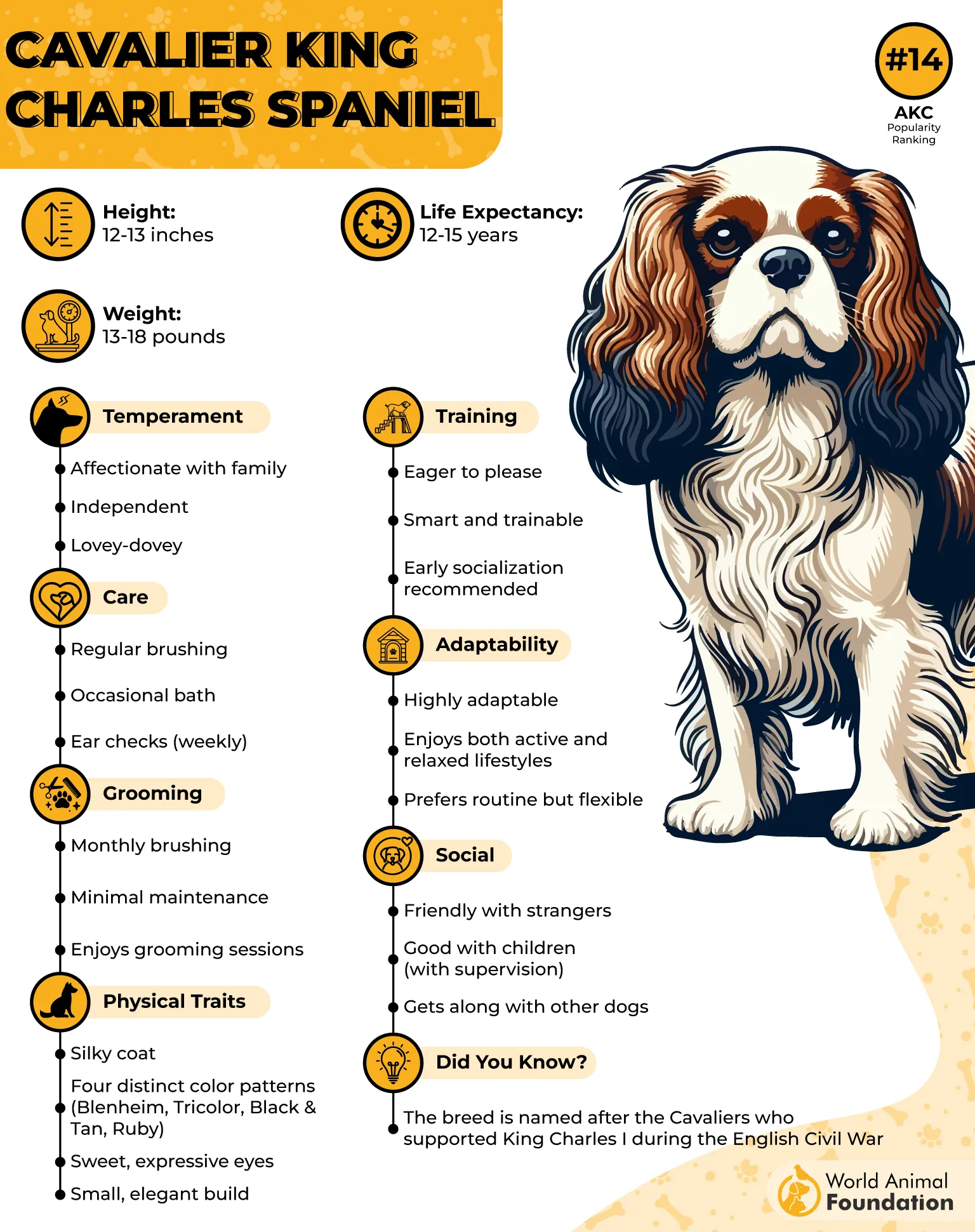
Affectionate and Playful
Cavaliers are gentle and loving dogs, adored for their sweet nature. They’re friendly to everyone—family, strangers, and other pets. Their moderate energy level makes them excellent companions for children, seniors, or anyone seeking a loyal, easygoing dog.
Regular Care and Moderate Activity
They need daily brushing to maintain their long, silky coats, with extra grooming during shedding seasons. While they don’t require intense exercise, they do benefit from daily walks and some playtime, making them ideal for apartment living.
Fun Fact: The breed’s royal connection is reflected in their name—Cavalier King Charles Spaniel—honoring King Charles II, who adored the breed!
9. French Bulldog
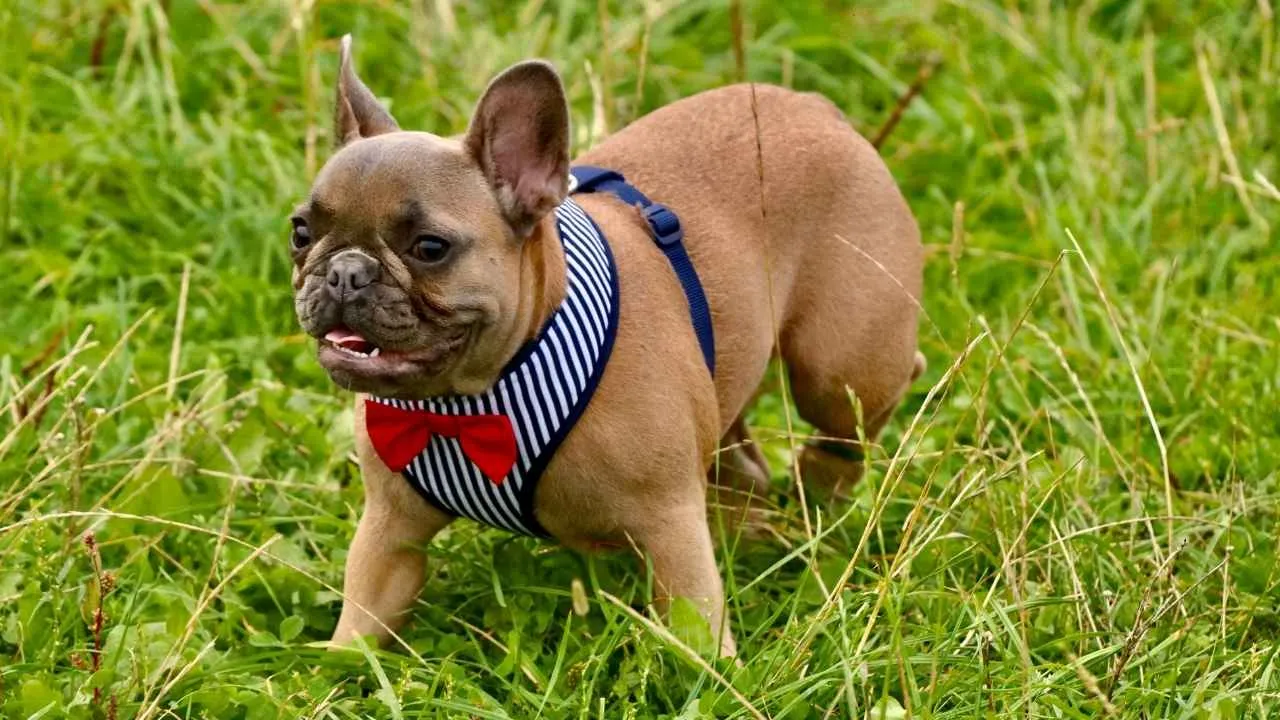
From England to France
The French Bulldog originally hails from Nottingham, England, in the late 19th century. They were bred by laceworkers to be small, affectionate lap dogs.
During the Industrial Revolution, lacemakers migrated to France, bringing their Bulldogs along, and the breed became associated with French culture.
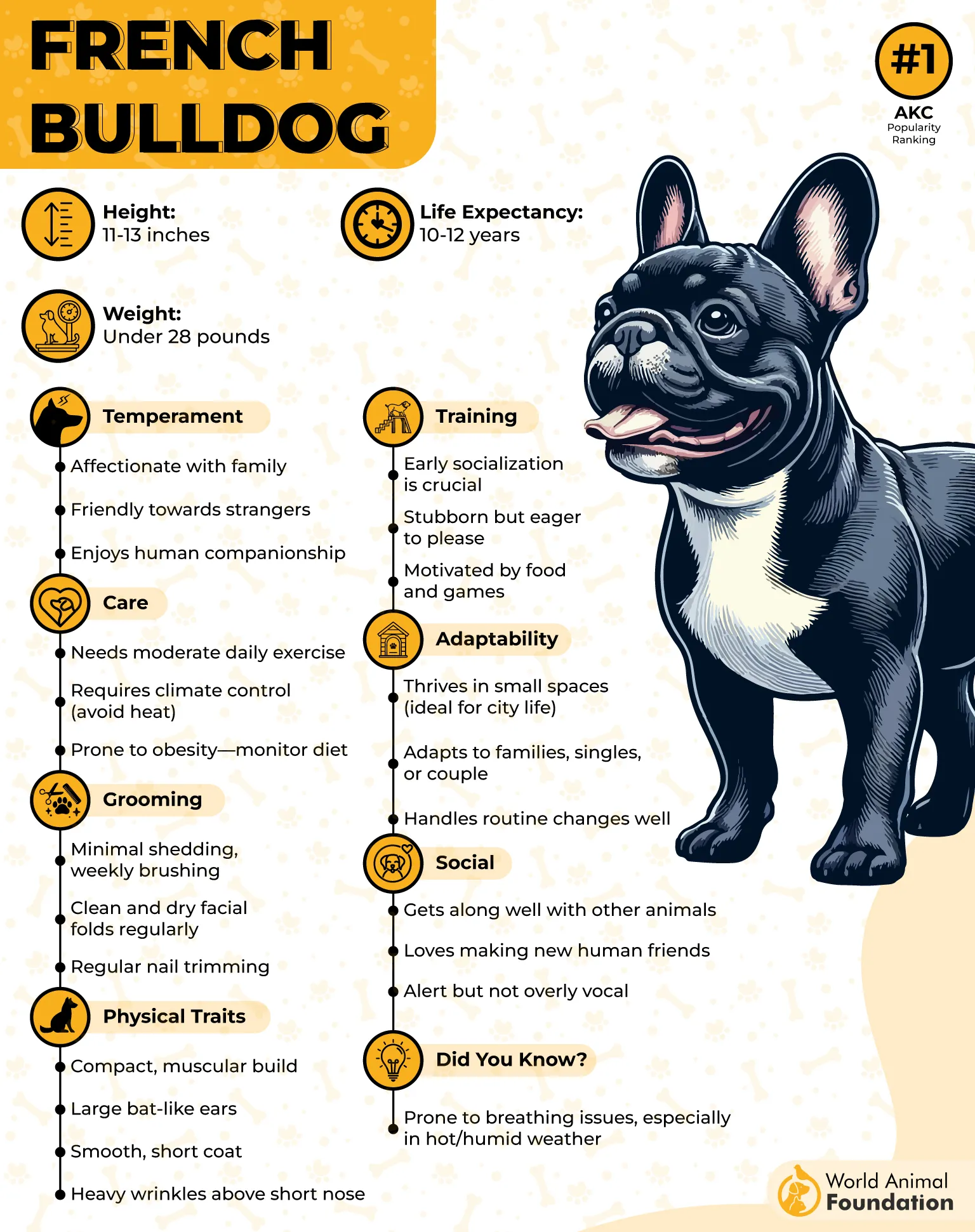
Playful, Loyal, and Social
French Bulldogs are friendly, affectionate, and quiet dogs. Known for their comical nature, they love being the center of attention and are great companions for families and individuals alike.
While they get along well with children, they may be territorial with other pets and require proper introductions to avoid conflicts.
Special Care Required
French Bulldogs are prone to health issues, particularly related to their joints and breathing. They require careful handling, especially with exercise, and should not be allowed to jump off furniture due to the risk of joint damage. Regular vet check-ups, including dental care, are crucial to maintaining their health.
Fun Fact: French Bulldogs can “talk” with their ears, using their large, expressive bat ears to communicate their moods!
10. Shih Tzu
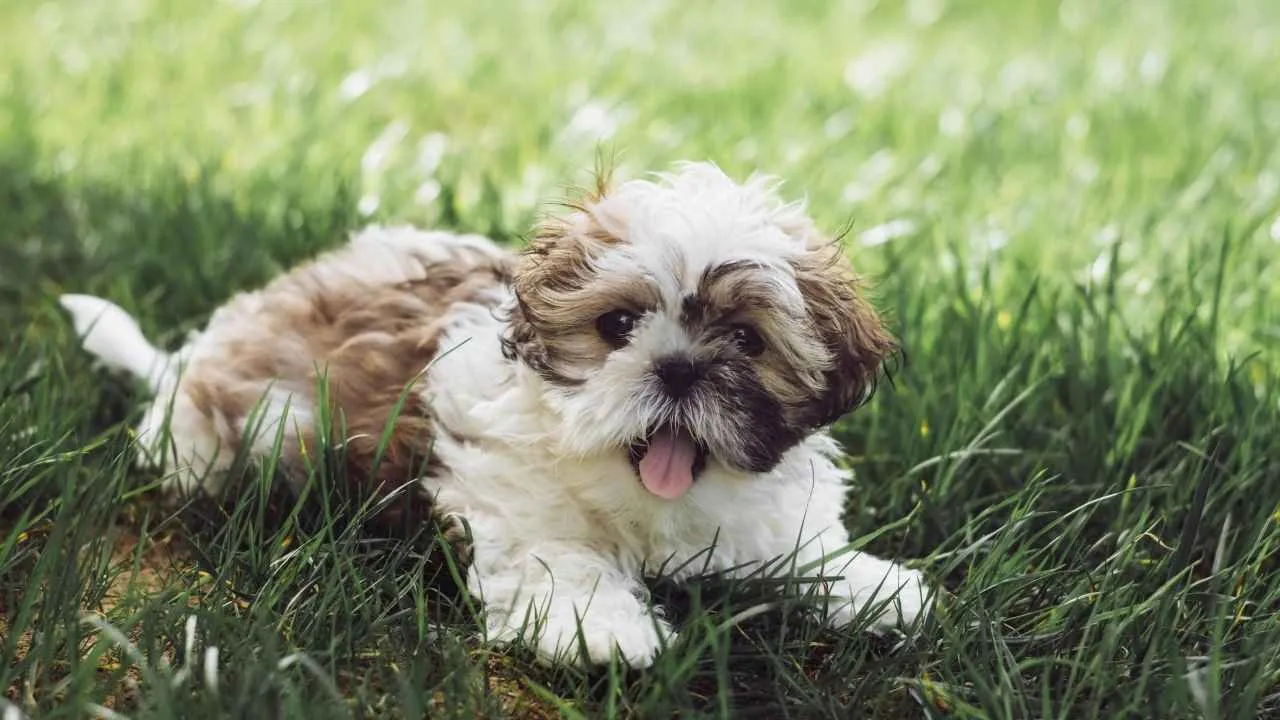
Bold, Playful, and Loving
Despite their small stature, Shih Tzus have a confident and lively personality. They are outgoing and friendly, quickly forming strong bonds with their families and often displaying a playful streak that can brighten any home.
Known for being gentle with children and getting along well with other pets, they make excellent companions in a variety of household settings.
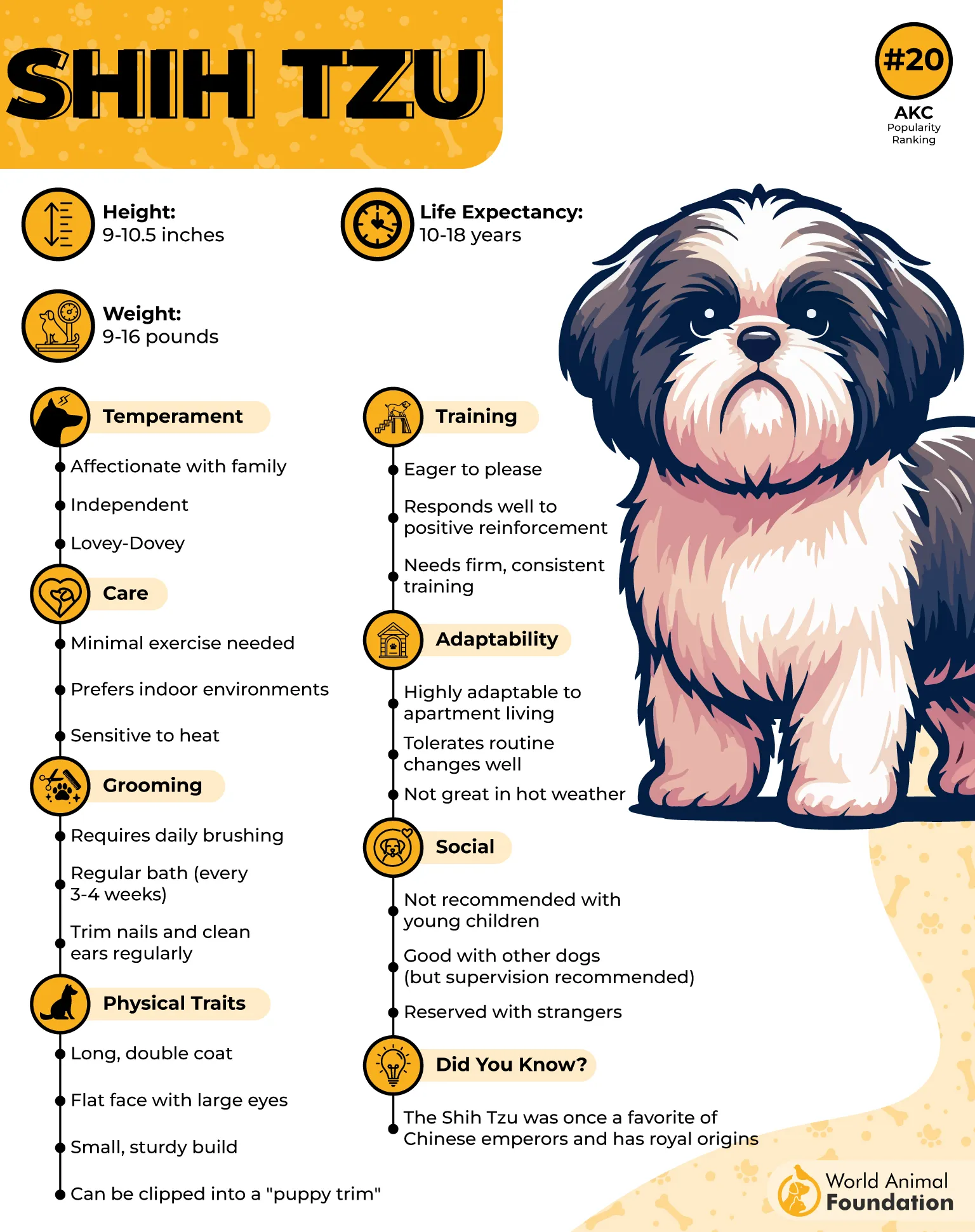
Exercise and Grooming
Shih Tzus do not require intense exercise; daily walks and short play sessions usually meet their activity needs. However, grooming is a more demanding task for owners. Their luxurious double coats grow long and silky, needing frequent brushing—often daily—to prevent tangles and mats.
Health Considerations
Due to their brachycephalic (short-nosed) face, Shih Tzus can be prone to breathing difficulties and may struggle in hot, humid weather. Their small size also makes them vulnerable to accidental injuries, whether from rough play, larger pets, or household hazards such as falling objects.
Fun Fact: The Shih Tzu’s name means “lion dog” in Chinese, inspired by its luxurious mane-like coat.
Conclusion
Choosing the best easygoing dog breeds for peaceful parents means looking for calm dog breeds with a gentle nature and calm temperament. Whether a lap dog or a giant breed, these calm dogs are great family pets thanks to their affectionate nature, low energy, and calm demeanor, making them ideal companions for homes with children, other pets, or therapy needs.
These low-energy dogs thrive in peaceful environments and respond well to obedience training, helping pet parents keep a quiet, mellow household. With an even-tempered personality, many are patient, loyal, and good-natured, preferring moderate exercise and rest, making them the perfect match for families seeking smart, sweet, and devoted friends.
Overall, calm dogs with affectionate, quiet personalities enhance a home’s peace and happiness. Regular exercise and grooming keep them healthy and happy, whether they are laid-back pups or playful companions. These easygoing breeds bring loyalty, joy, and calm to families and owners alike.


